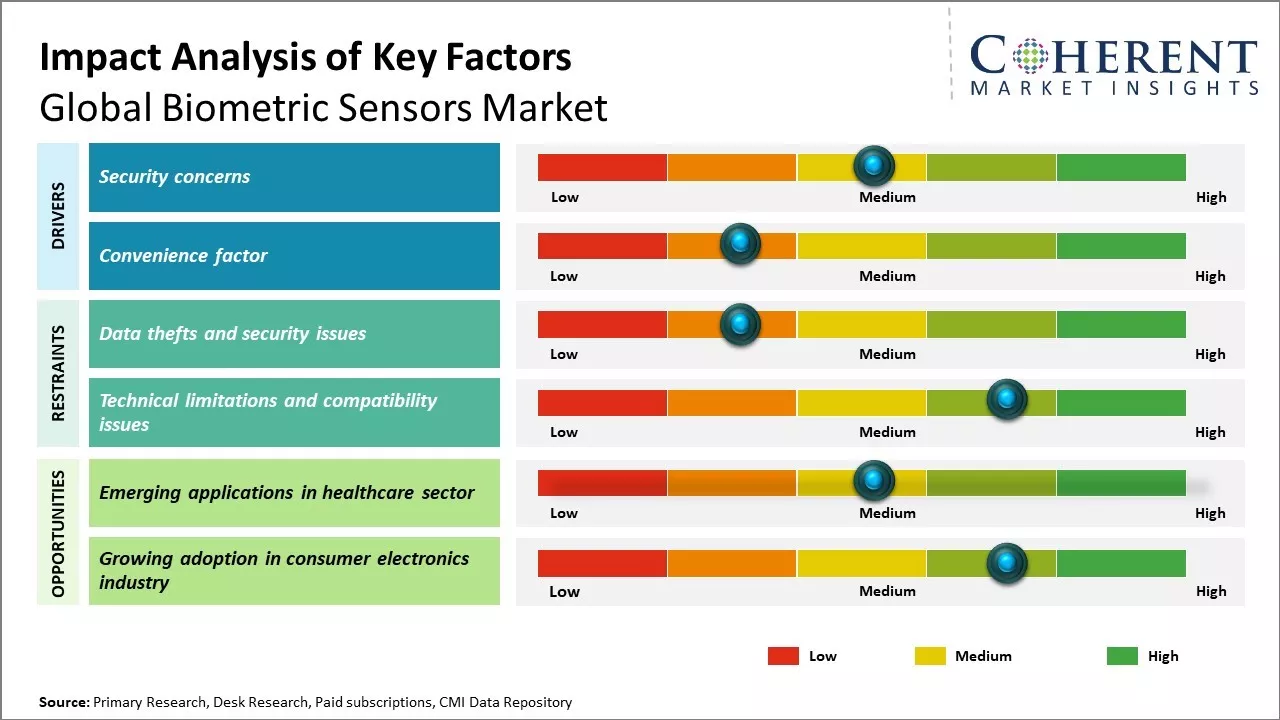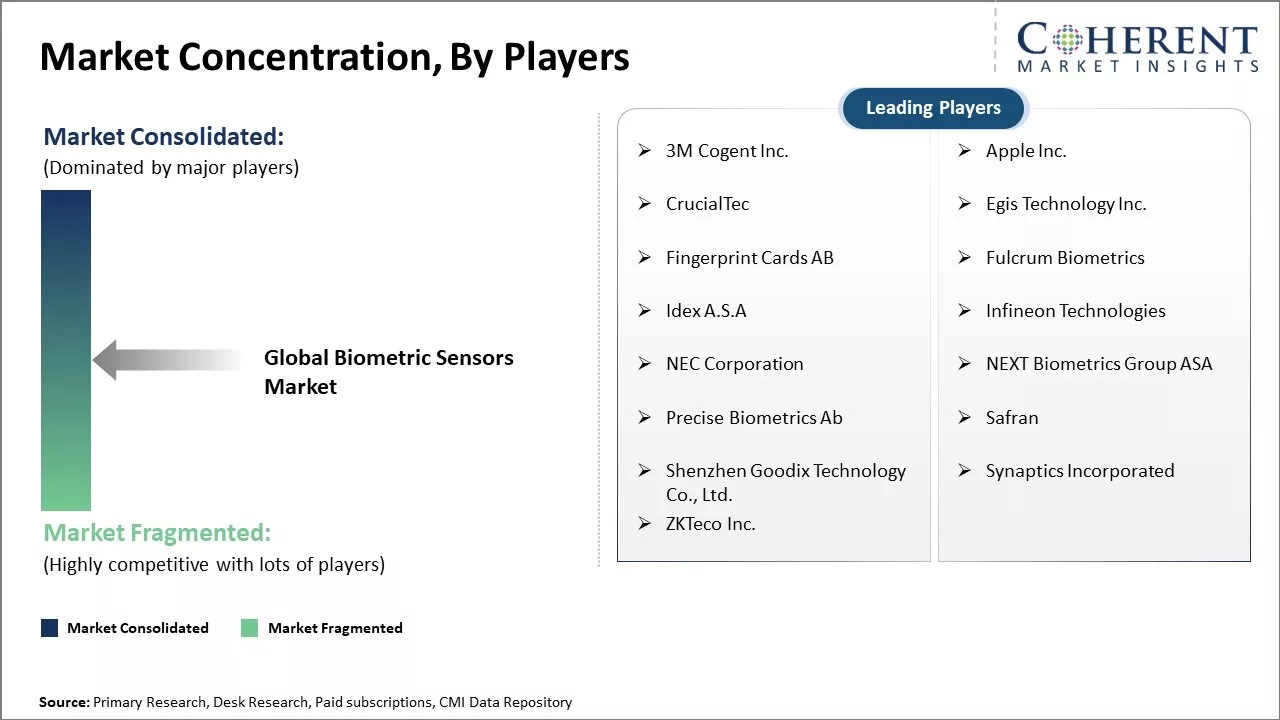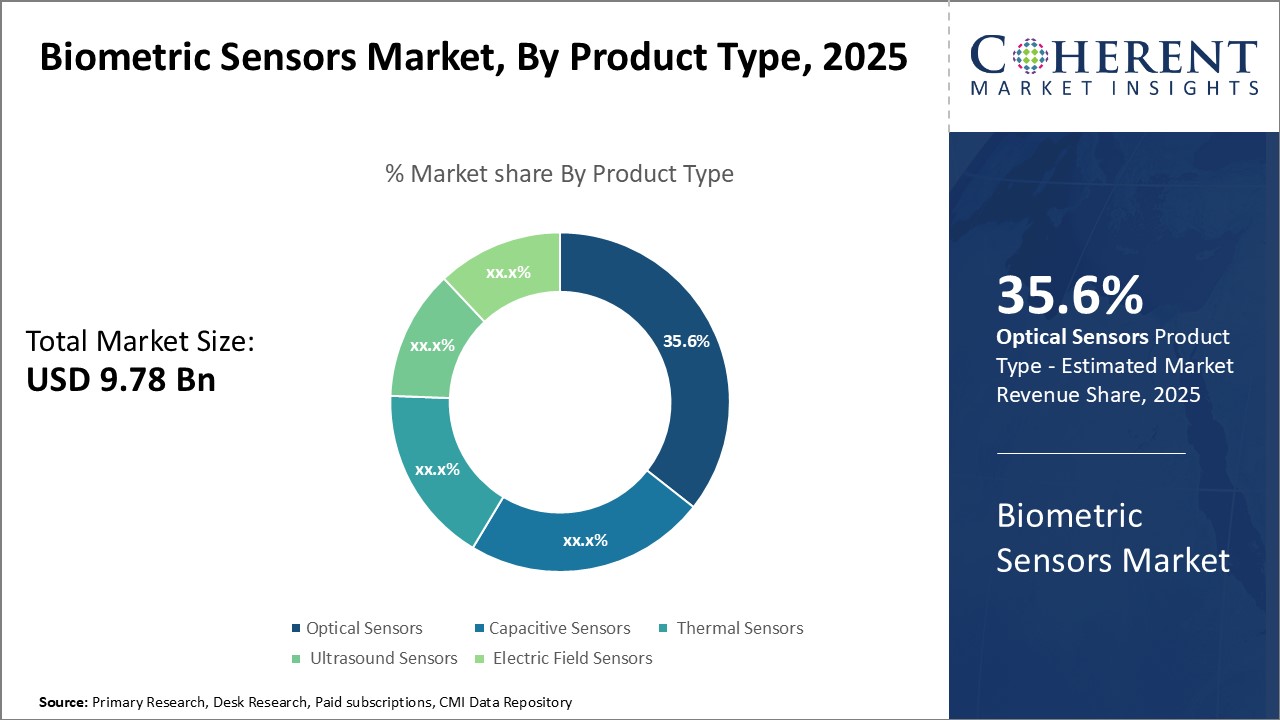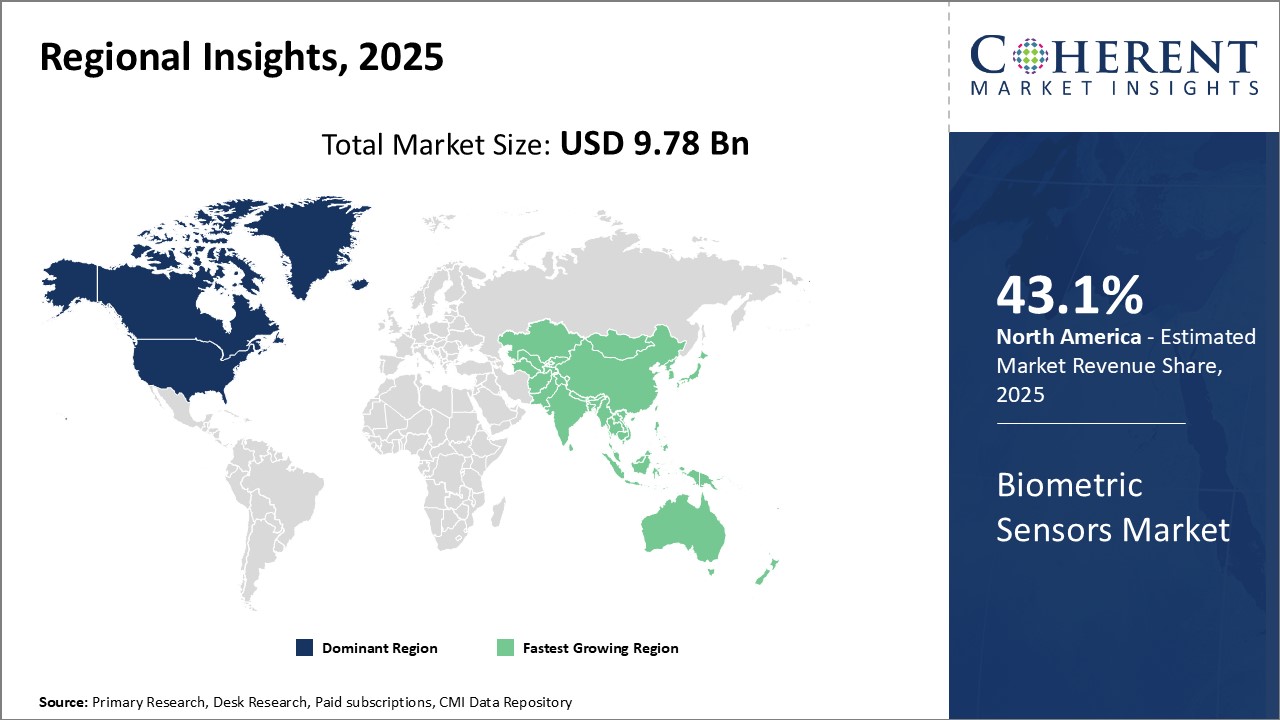The global biometric sensors market is estimated to be valued at US$ 9.78 Bn in 2025 and is expected to reach US$ 23.01 Bn by 2032, exhibiting a compound annual growth rate (CAGR) of 13.0% from 2025 to 2032.

Discover market dynamics shaping the industry: Download Free Sample
The biometric sensors market is witnessing positive trends owing to the increasing demand for contactless biometrics and multi-factor authentication across various end-use industries. Widespread adoption of cloud computing and mobility technologies and growing security and authentication concerns across government and commercial sectors are some of the key factors driving the demand for biometric sensors. Integration of biometrics with IoT solutions and the development of application-specific biometric sensors are expected to create new market opportunities. However, high implementation costs and privacy and security challenges associated with biometric data may hamper the growth of this market during the forecast period.
Security concerns
The growing need for advanced security across various industries has boosted the adoption of biometrics globally. Biometric authentication relies on unique physiological and behavioral characteristics that cannot be lost or forgotten. This reduces the risk of security breaches from compromised passwords or sharing of secret pins. The integration of biometric sensors in devices from smartphones to laptops allow for contactless verification of identity without having to remember multiple credentials. Governments and law enforcement agencies are also implementing biometric systems for border control, national IDs, and criminal investigations. Advanced biometric modalities like fingerprint, face, and iris recognition are becoming the preferred choice over tokens or security questions due to their accuracy and speed. As cybercrimes rise and instances of data theft grow, stakeholders in both public and private sectors are prioritizing security processes that leverage biometrics.

Get actionable strategies to beat competition: Download Free Sample
Convenience factor
Modern consumers expect frictionless experiences from the brands and services they engage with on a daily basis. Traditional methods of identity verification through passwords or security questions tend to be inconvenient and time-consuming. The integration of biometric sensors allows devices to be securely unlocked within seconds with just a touch or glance. This convenience level has fuelled greater adoption of biometrics across consumer-facing industries. Smartphone manufacturers are equipping most premium devices with advanced fingerprint sensors, facial recognition, or both as their primary means of biometric authentication. E-commerce platforms and financial service apps are also using biometrics to simplify the login and checkout processes. Finger and facial scans have replaced lengthy sign-up forms with just a scan. Even government bodies are offering biometric-based digital ID programs to citizens for securing services seamlessly. As biometrics get embedded in more surfaces across homes, workplaces and public spaces, they are enhancing safety layers while upholding friction-free experiences for consumers and employees.
Key Takeaways from Analyst:
The global biometric sensors market is poised to grow significantly over the next decade driven by increasing usage of biometrics for authentication across various applications. Fingerprint and facial recognition sensors are expected to dominate the market owing to high adoption in mobile devices, government IDs, and consumer electronics. North America will continue its leadership position while Asia Pacific is anticipated to offer most growth opportunities due to rising consumerism and digital payment usage in countries like India and China.
One of the major opportunities for biometric sensor vendors is the integration of multiple modalities in single devices for enhanced security. While fingerprints remain dominant, iris, and voice recognition will gain market share slowly. The market may also see newer technologies like palm-print, DNA, vein and heartbeat based biometric sensors being introduced with advancements in research. However, high component costs and sensor size constraints remain challenges, especially for multi-modal solutions in price-sensitive mobile phones.
Government mandates on e-passports and digital ID programs will propel revenues. Growing usage of biometric modalities for attendance, access control and surveillance incorporates, schools, factories and public places will also augment the demand. Consumer demand for convenience and ease of biometric authentication in smart devices, FinTech, e-commerce, and digital payments are key growth drivers.
Market Challenge: Data thefts and security issues
The growing concerns around data security and privacy issues pose a significant challenge for the growth of the global biometric sensors market. As biometric technologies like fingerprint, face and iris recognition become pervasive for authentication across various applications, there is a rising threat of biometric data theft. Once compromised, biometric data cannot be changed unlike passwords as it is uniquely linked to an individual. This poses serious risks of identity theft and financial or other types of fraud.
Market Opportunities: Emerging applications in healthcare sector
The healthcare sector is poised to benefit tremendously from emerging applications of biometric sensors in the coming years. Biometrics are increasingly being used for patient identification and record access in hospitals to ensure privacy and security of sensitive health data. This reduces medical errors caused by misidentification. Biometric sensors can also enable contactless checks of vital signs and symptoms. For example, iris scanners and AI-powered cameras can accurately detect blood pressure, heart rate, fever and other indicators by analyzing facial images without direct contact. This is highly advantageous given current priorities around infection control and social distancing in clinical settings. As the global population ages, remote patient monitoring will grow in importance to manage chronic diseases and reduce healthcare costs. Biometric wearables using technologies like fingerprint sensors, ECG, and photoplethysmography can monitor patients remotely and flag any deviations to physicians. This allows for early medical interventions and prevents expensive emergency hospitalizations. The ability to comprehensively track health data over time through biometrics will also accelerate drug discovery and precision medicine by providing valuable real-world evidence.

Discover high revenue pocket segments and roadmap to it: Download Free Sample
Insights By Product Type - Precision and Durability Drive Ceramic Sensors' Leading Share
Optical sensors are projected to hold a significant 35.6% market share due to their precise biometric readings and durable nature. These sensors offer high accuracy because they can withstand heat and resist electrical noise interference. Their inorganic, non-metallic composition makes them impervious to environmental factors and damage from extreme temperatures, moisture, and other harsh conditions. This reliability and precision has made optical sensors indispensable for applications requiring flawless identification, such as secure building access, border control, and banking authentication, where failure is not an option.
Optical sensors boast longevity, with lifecycles reaching 10 years of continuous use without replacement. Their durable design prevents wear and tear even with high-frequency usage, maintaining consistent readings over hundreds of thousands of scans. This ensures minimal maintenance and replacement costs. Optical sensors' precision persists from initial deployment, with negligible margin of error accumulation over time. Their stability far surpasses other biometric technologies that experience scanning degradation as components age. Overall, optical sensors' accurate and robust biometric identification has captured the largest segment share due to their fail-proof performance essential for high-security applications.
Insights By Application - Ubiquity and Convenience Boost Finger Scanning Dominance
In terms of Application, the Finger Scan segment is estimated to hold 42.2% share of the market owing to its ubiquity and ease-of-use. Fingerprint recognition remains the most pervasive and familiar form of biometrics worldwide due to it being a minimally invasive identification method. Fingerprint scanning offers unparalleled convenience, requiring only a quick touch rather than complex setup processes typical of other biometric modalities. This seamless "scan-and-go" experience is ideal for swift transactions across smartphones, laptops, doors, and ATMs. Its integration into everyday devices promotes widespread adoption, minimizing disruption to routines. Fingerprint scanning is universally recognized and easily understood, bridging demographic, literacy, and technological barriers. Its straightforward operation ensures even inexperienced users can authenticate effortlessly. As businesses increasingly seek streamlined security solutions, fingerprint scanning meets the demand for efficient, user-friendly biometric authentication.
Insights By End-use Industry - Personalization Fuels Dominance in Smartphone Consumption
In terms of End-use Industry, the Smart Phones segment is estimated to hold 34.8% share of the market owing to their personalized user experiences. As biometric sensors integrate into continually shrinking mobile devices, they play a key role in optimizing interactions on a personal level. On-device fingerprint, facial recognition, and iris readers provide rapid user authentication, replacing cumbersome passwords or PINs. This access method ties directly to the device user rather than relying on physical possessions such as cards. Biometric sensors enable tailored interfaces, permissions, and services based on verified identities, enhancing user engagement through synchronized content, preferences, and security across interconnected devices and accounts. Smartphones function as digital passports, facilitating personalized authentication via integrated biometric verification almost anywhere. As mobile platforms and apps identify their users reliably, convenience fosters loyalty and boosts usage and interaction within dynamic social networks. Advanced biometric customization transforms smart devices into personalized digital tools for authenticated users, reinforcing market leadership through enhanced user utility.

Need a Different Region or Segment? Download Free Sample
North America continues to dominate the global biometric sensors market with an estimated market share of 43.1% in 2025 driven by robust demand across different industries and the presence of major biometric solution providers in the region. The U.S. accounts for the lion's share of the market owing to stringent data security regulations and increased adoption of biometrics for applications ranging from mobile security to law enforcement.
The automotive industry is increasingly integrating biometric sensors for next-generation vehicles. Biometric solutions are expected to play a key role in driver identification, access control, and digital payments in vehicles. Several automakers are engaged in trials of fingerprint and iris recognition systems for new models. The defense sector also constitutes a major end user, relying on biometric technologies for military access control, data security, and personnel identification. However, pricing pressures from evolving technologies and increased competition could hamper market growth to some extent over the forecast period.
Asia Pacific has emerged as the fastest growing regional market for biometric sensors globally. Considerable expansion of consumer electronics manufacturing bases as well as rising electronics and automotive production in countries such as China, India, Japan and South Korea is driving regional demand. These countries are key global trade hubs for export of electronic gadgets integrated with biometric sensors. Additionally, the mobile payment revolution propelled by companies such as Alibaba, Tencent, and Paytm has popularized the usage of fingerprint-based biometric authentication in the daily lives of consumers.
Domestic electronics giants are proactively collaborating with biometric companies and launching new solutions. The region also exhibits burgeoning deployment across government ID programs along with modernization initiatives in defense, law enforcement, and border security applications. However, lack of data security regulations in certain developing Asian markets and concerns over privacy issues restrain complete proliferation of biometric technologies. But overall, rapid digitization and rising per capita income continue to create strong prospects.
Biometric Sensors Market Report Coverage
| Report Coverage | Details | ||
|---|---|---|---|
| Base Year: | 2024 | Market Size in 2025: | USD 9.78 Bn |
| Historical Data for: | 2020 To 2024 | Forecast Period: | 2025 To 2032 |
| Forecast Period 2025 to 2032 CAGR: | 13.0% | 2032 Value Projection: | USD 23.01 Bn |
| Geographies covered: |
|
||
| Segments covered: |
|
||
| Companies covered: |
3M Cogent Inc., Apple Inc., CrucialTec, Egis Technology Inc., Fingerprint Cards AB, Fulcrum Biometrics, Idex A.S.A, Infineon Technologies, NEC Corporation, NEXT Biometrics Group ASA, Precise Biometrics Ab, Safran, Shenzhen Goodix Technology Co., Ltd., Synaptics Incorporated, and ZKTeco Inc. |
||
| Growth Drivers: |
|
||
| Restraints & Challenges: |
|
||
Uncover macros and micros vetted on 75+ parameters: Get instant access to report
Share
Share
About Author
As an accomplished Senior Consultant with 7+ years of experience, Pooja Tayade has a proven track record in devising and implementing data and strategy consulting across various industries. She specializes in market research, competitive analysis, primary insights, and market estimation. She excels in strategic advisory, delivering data-driven insights to help clients navigate market complexities, optimize entry strategies, and achieve sustainable growth.
Missing comfort of reading report in your local language? Find your preferred language :
Transform your Strategy with Exclusive Trending Reports :
Frequently Asked Questions
Joining thousands of companies around the world committed to making the Excellent Business Solutions.
View All Our Clients